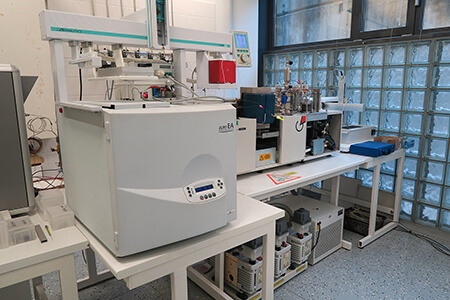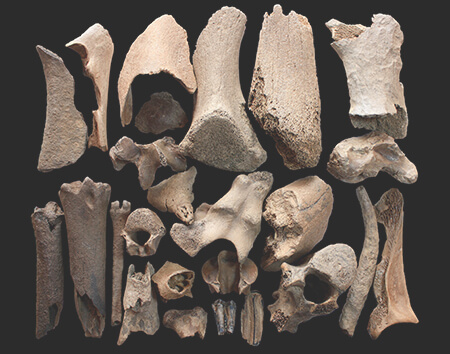This is a lesson summary. The full lesson can be viewed by purchasing an online course subscription.
Learning Objective
In this lesson we will learn how radiometric dating is used to determine the age of rocks and fossils.
Learning Outcomes
By the end of this lesson you will be able to:
- Explain what a radioisotope is.
- Describe the process of radioactive decay and explain how it is measured in half-lives.
- Explain how radiometric dating determines the absolute age of an object.
- Describe how radiocarbon dating determines the age of biological materials.
- Describe how potassium-argon dating determines the age of rocks and mineralised fossils.

(Image: Sarka Na kopci, Wikimedia Commons)
Lesson Summary
- Radioisotopes (radioactive isotopes) are unstable variants of chemical elements that undergo spontaneous radioactive decay.
- Radioactive decay involves the release of radiation and the formation of a stable isotope.
- The rate at which a particular radioisotope decays is constant.
- It is measured in half-lives which correspond to the time required for one half of all atoms to undergo radioactive decay.
- Radiometric dating uses the predictable rates of radioactive decay of radioisotopes to determine the absolute age of objects by measuring the relative amounts of naturally occurring radioisotopes contained within them.
- Geochronology refers to the use of absolute dating methods, such as radiometric dating, for determining the ages of rocks, sediments and fossils.
- Radiometric dating methods used in geochronology include radiocarbon dating and potassium-argon dating.
- Radiocarbon dating (carbon-14 dating) is used for determining the age of biological materials up to about 60,000 years old.
- When organisms die, they no longer absorb carbon, so the amount of carbon-14 contained within them slowly decreases due to radioactive decay.
- Hence, the proportion of carbon-14 atoms in a biological sample can be used to determine how long ago an organism died.
- Potassium-argon dating is used for determining the age of rocks and mineralised fossils older than about 100,000 years.
- When molten rock crystallises, argon-40 gas that is produced through the radioactive decay of potassium-40 accumulates within the rock.
- Hence, the proportion of argon-40 to potassium-40 can be used to determine how long ago a rock formed.

(Image: Stanford Lone, Adobe Stock)
(Header image: Elena, Adobe Stock)
